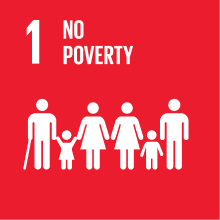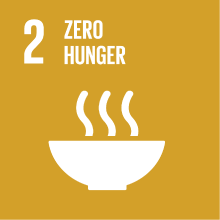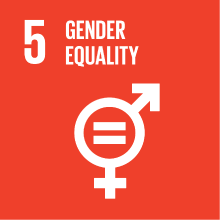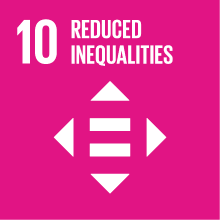MODERN AND CONTEMPORARY CHINESE LITERATURE
- Academic year
- 2025/2026 Syllabus of previous years
- Official course title
- LETTERATURA CINESE MODERNA E CONTEMPORANEA
- Course code
- LM002I (AF:568680 AR:320807)
- Teaching language
- Italian
- Modality
- On campus classes
- ECTS credits
- 6
- Degree level
- Master's Degree Programme (DM270)
- Academic Discipline
- L-OR/21
- Period
- 2nd Semester
- Where
- VENEZIA
- Moodle
- Go to Moodle page
Contribution of the course to the overall degree programme goals
The main subject of the course addresses the relation between gender and genre, namely Chinese literature written by Chinese women writers and related to women matters.
Expected learning outcomes
• Know the historical and social context in which each writer's attitudes, ideas and works took shape, and their interplay with the society and cultural life of the time;
• Know the literary trends defining the historical context: students will be guided into a critical reflection upon the literary texts read in class weekly, in order to let them recognise their stylistic features and understand the underlying meanings, also in relation with the shaping of modern Chinese society and culture.
2. Ability to apply knowledge and understanding
• Students will be able to recognise and categorise texts in terms of genre, linguistic and lexical features specific of the author's time and social context;
• Students will be able to analyse and compare literary texts and phenomena to western literature;
3. Judgement capacity
• assess the level of one’s knowledge of texts, genres and textual analysys skill;
4. Communication skills
• argumentative skill;
• be able to communicate orally by means of class presentation and in the final exam, with clarity of exposition and accuracy in citing sources (both English and Chinese sources)
• be able to communicate in written form (final paper), demonstrating a general knowledge of the sources and of the basic rules of academic writing.
5. Learning skills
Students' ability to analyse and research autonomously Chinese literature will be tested through the final paper they are requested to write on a new topic agreed upon with the teacher. Besides, oral skills and argumentative skills will be tested during the class presentation and the final oral exam, by which they will have to demonstrate their general understanding and critical view on the course contents.
Pre-requirements
Contents
Referral texts
Nicoletta Pesaro, Melinda Pirazzoli, La narrativa cinese del Novecento. Autori, opere, correnti. Roma, Carocci, 2019 o
Daniela Brogi, Lo spazio delle donne. Torino, Einaudi, 2022.
Mary Eagleton, "Genre and gender", in David Duff (ed.), Modern Genre Theory, Essex, Longman, 2000, pp. 250-262.
Nicoletta Vallorani, "Femminismi e sguardi queer", in Laura Neri e Giuseppe Carrara (a cura di), Teoria letteraria, Roma, Carocci, 2021, pp. 311-326.
Robbins, "Gender and Genre in the Short Story", in The Edinburgh Companion to the Short Story in English, Edinburgh University Press, Edinburgh, pp. 293-312.
Supplementary readings
Amy Dooling, Women’s Literary Feminism in Twentieth-Century China. New York Palgrave MacMilian, 2005
Haiping Yan, Chinese Women Writers and the Feminist Imagination, 1905-1948. London, Routledge, 2006.
Ping Zhu and Hui Faye Xiao, Feminisms with Chinese Characteristics, Syracuse, Syracuse University Press, 2021.
孟悦,戴锦华, 浮出历史地表 ,北京,北京大学出版社,2022.
Kirk Denton ed., The Columbia Companion to Modern Chinese Literature, New Work, Columbia University Press, 2016.
孟悦,戴锦华, 浮出历史地表 ,北京,北京大学出版社,2022.
陈思和 (编) 中国当代文学史教程, 复旦大学出版社,2019年 (第二版)
Hong Zicheng, A History of Contemporary Chinese Literature, translated by Michael M. Day, Brill, 2008.
ONLINE SOURCES
Sinosfere http://sinosfere.com
Paper Republic https://paper-republic.org
Denton Bibliography https://u.osu.edu/mclc/
CNKI https://oversea.cnki.net/index/
Words without borders https://www.wordswithoutborders.org/find/languages/chinese
https://clt.oucreate.com/
Assessment methods
Evaluation criteria:
1) Relevance and Accuracy: The relevance and factual correctness of the answers in relation to the course program.
2) Formal and Linguistic Competence: The formal correctness and proficiency of the language used.
3) Originality and Depth of Analysis: The originality of thought and the depth of the analysis provided.
4) Synthetic and Critical Skills: The ability to synthesize complex material and demonstrate critical thinking.
Type of exam
Grading scale
B. Scores in the 23-26 range will be awarded in the presence of a fair knowledge of the main authors and genres of modern Chinese literature from the proposed perspective;
C. Scores in the 27-30 range will be awarded in the presence of a good or excellent knowledge of the main authors and genres of modern Chinese literature from the proposed perspective;
D. Honors will be awarded in the presence of an outstanding knowledge of the main authors and genres of modern Chinese literature from the proposed perspective.
Teaching methods
Further information
2030 Agenda for Sustainable Development Goals
This subject deals with topics related to the macro-area "Poverty and inequalities" and contributes to the achievement of one or more goals of U. N. Agenda for Sustainable Development




